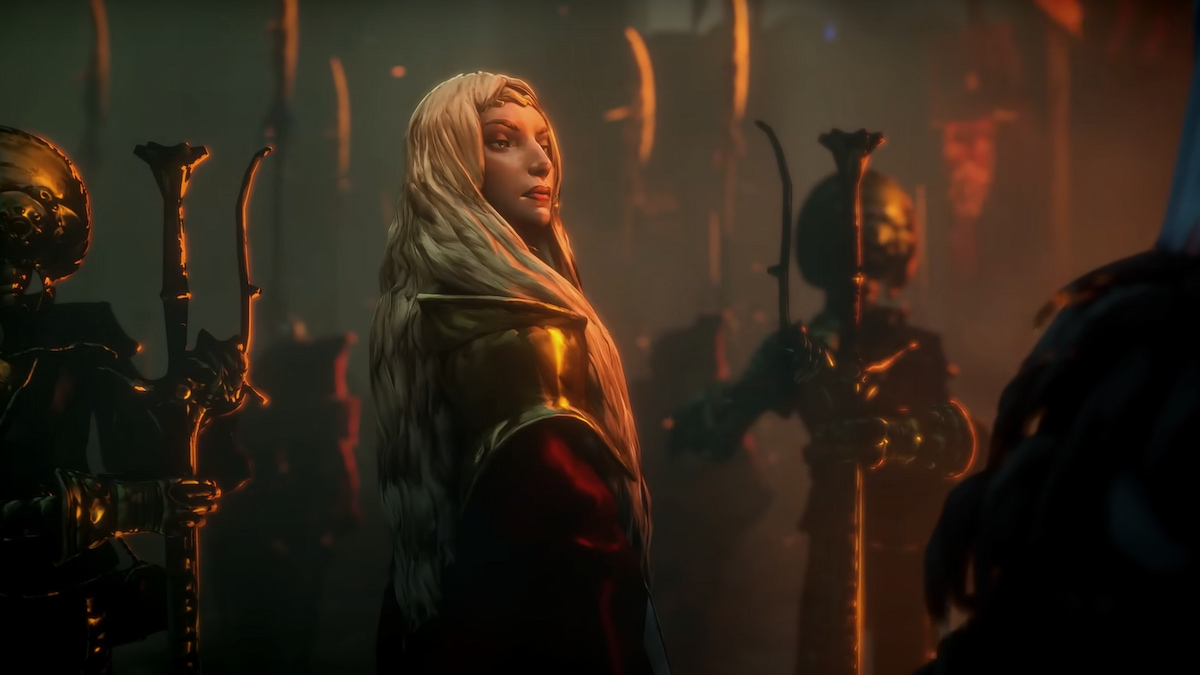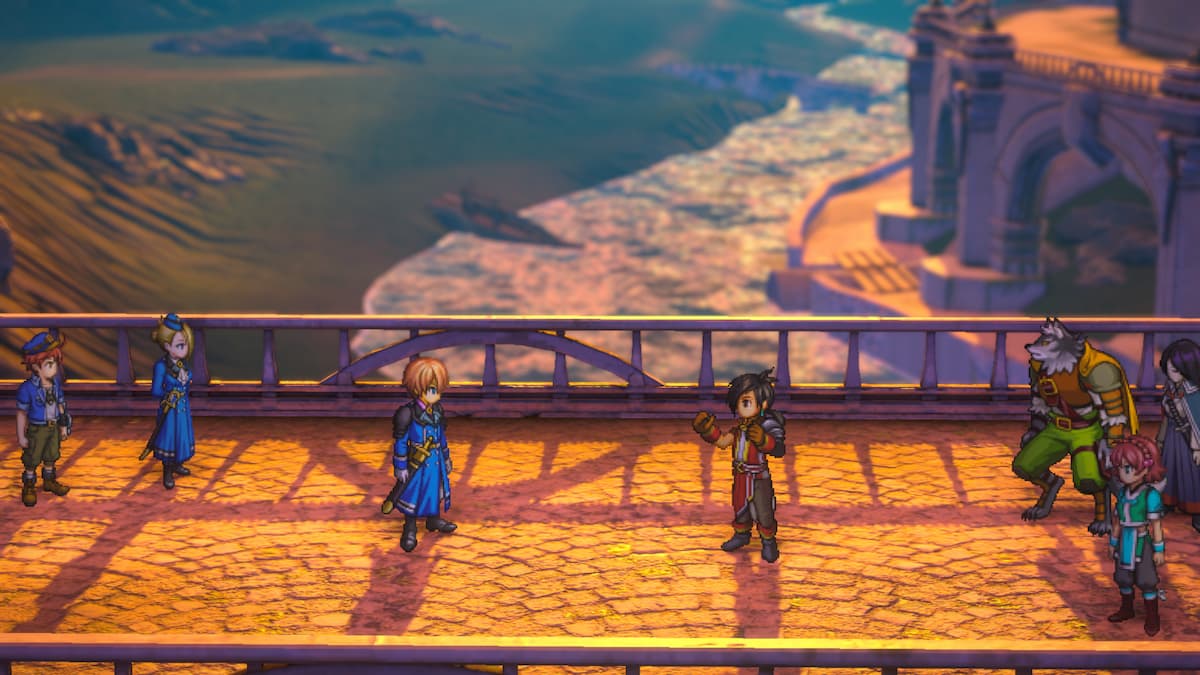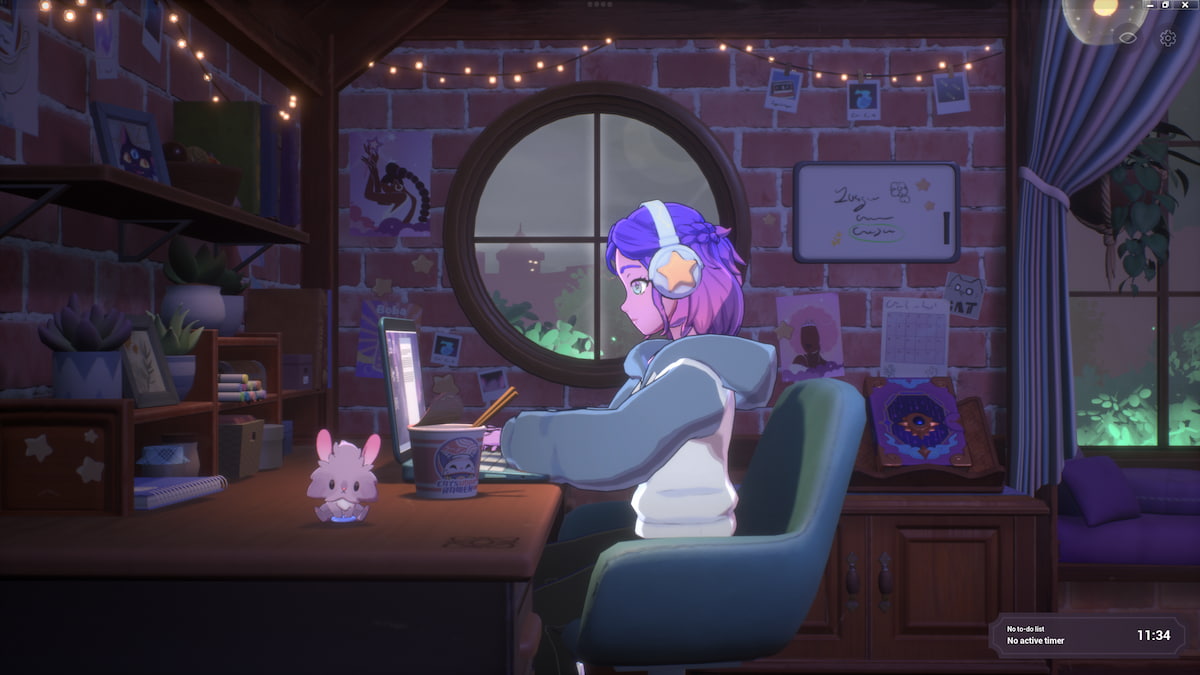There’s a good game trapped somewhere in Azure Striker Gunvolt. The various future venues, the myriad enemies to blow apart, and the tense boss encounters all tell me that I should enjoy this game.
Yet I just can’t find it within me to enjoy Azure Striker Gunvolt. The game simply makes too many mistakes (and too important mistakes) for that to be a reality. Far from making it a bad game, the series of misguided design choices condemn this game to perhaps a worse fate: a competent, completely average video game that simply holds your attention.
First Glance
Many of the game’s problems stem from how it delivers on its basic premise. The game sees you playing as an adept (essentially super-powered humans) named Gunvolt, on a quest to stop an evil corporation from using other adepts to control the world. Said quest is very reminiscent of the old Mega Man Zero games. You’ll run through futuristic 2D locales, navigating simple obstacle courses and shooting any robotic enemies that stand in your way.
Taken along these terms, Azure Striker Gunvolt leaves a lot to be desired. The enemies, for instance, are anything but challenging. Bosses aside, each enemy goes down quickly and only displays one or two behaviors that you can discern relatively quickly. Likewise, the levels are also simple. Each one generally amounts to a series of platforms casually strewn about, maybe with some sort of gimmick to briefly hold your attention.

Neither option works in the game’s favor. After all, they are all that you do in the game: run through levels, shoot up bad guys. If neither option properly engages you, then what motivation do you have to play the game at all?
Now this is not to say that Azure Striker Gunvolt is a bad game. It’s clearly competent enough to grab your attention. But as the previous examples demonstrate, the game doesn’t know what to do once it has your attention. In fact, it’s possible to blunder your way through a level without the game punishing you for it. As a result, the game feels very flat, as though it lacks something more.
Gunvolt’s electric powers could very well be this something more. With these powers, Gunvolt can channel bolts of lightning into enemies after tagging them with his gun. He can also use said powers for light navigation challenges, like powering a platform to move it forward, or using his electricity as a makeshift mosquito net. In terms of combat, the system works just fine. It makes battles an interesting mix of action and puzzle as you dodge enemies while making sure that you’re still dealing damage.

Yet in terms of level design, the electric powers are less effective, albeit because of outside factors. Rather than playing through levels in a set orders, Azure Striker Gunvolt lets you choose the order yourself. Although this sounds like a fun gameplay mechanic, its effects on the rest of the game are devastating. Because you can play the levels in any order, the level designers had to assume that any level could be your first. Thus, there’s no room to develop any one mechanic between levels. (This also means that the game lacks a difficulty curve until the very end of the experience.)
And because each level only lasts about ten minutes (if that), there’s not much room to develop within a level, either. So rather than seeing all these different uses combine with each other, or seeing one use stretched to its limits, we instead see a collection of mildly interesting gimmicks for maybe eight minutes at a time. Again, the experience remains flat.
A More Favorable Interpretation
So lacking any mitigating factors, perhaps it’s best to reinterpret the game altogether. Rather than being about just getting through the levels, maybe the game is more about getting through them well, in a score attack kind of way. There is very clear evidence supporting this. Not only does the game score you for killing enemies and getting through levels quickly, but it also tracks how many times you have hit enemies without being hit yourself.
Along these lines, Azure Striker Gunvolt performs far more admirably. This added score attack dimension means that there’s always some activity to engage you. How fast can I get through this part? How high can I keep this combo? Even the game’s flat periods transform into spaces that you must race through. Any alterations to make the game more difficult or more active would just be overwhelming, at this point. In short, the game has hit a balance and become genuinely fun.

But we must remember that almost nothing material about the game has changed; only our interpretation of it has. Thus, we must find in the game something that drives us toward that interpretation. Challenges seem the most obvious solution. Think of challenges as side goals to tackle, like getting through a level in a certain amount of time or without taking any damage. These challenges engage you in a way that nothing else in the game can match. They completely change you how interact with the level. By framing the experience like this, challenges offer new layers of depth and longevity should you choose to try them out.
Challenges Are Great, Why Are They Hidden?
Yet therein lies the crux: you must choose to try the challenges. Sadly, the game does very little to highlight their existence. Challenges are hidden away in their own menu, which the game only mentions once early on. In fact, when it does mention challenges, it says that you don’t lose anything by not choosing to tackle them.
Moreover, many of the challenges are level specific, but the menu lumps them together into a single category. Finding a challenge for a single level is more difficult than it needs to be. It’s much easier to play through the levels without them.

In short, the challenges are an afterthought. They are not necessary to the experience, and the game does not put in the effort to integrate them more fully. This is in spite of the challenges arguably being the best part of the game. To bury them like this is almost to encourage playing the game as is, which isn’t enough to make it compelling. Essentially, the game has actively stymied its best chances at success.
Fortunately, Azure Striker Gunvolt also has raw score to fall back on. It might not be as big an element as challenge, but it does not suffer nearly as many problems as the challenges do. Like many games, you can only see score as a set of statistics next to a given level: high score, fastest time, and the highest rank you have gotten in that level. From this, a sense of self competition and perhaps outdoing yourself arise.
True, it’s not immediately obvious; you have to come to this game with that in mind. Yet this is a somewhat easy task, unlike with the challenges. The game clearly displays your best score, time, and rank next to the level before you start it. In a way, the game primes you to outdo yourself on your next run, at least a little. Although this appeal is limited, Azure Striker Gunvolt might be an enjoyable experience for gamers looking for score challenges.
In Conclusion
Of course, there is a little more to the game than what I have described here. The game also offers very hard boss battles (maybe too hard); a perfectly rendered 2D aesthetic; a story that uncomfortably oscillates between ridiculing and unironically embracing Japanese video game tropes; and maybe a bit more.
But in the grand scheme of things, these factors are ultimately irrelevant. In the end, Azure Striker Gunvolt is nothing if not an an action platformer, and in that regard, the game does not hold up. It certainly seems aware of what being an action platformer means, but it does not do much beyond that. In fact, any attempts to move beyond these walls or add greater meaning to the experience do not end in the game’s favor. Those of you looking for a basic action game will no doubt find that here. But at the same time, you’ll also find a look at what the game could have been: so much more.





